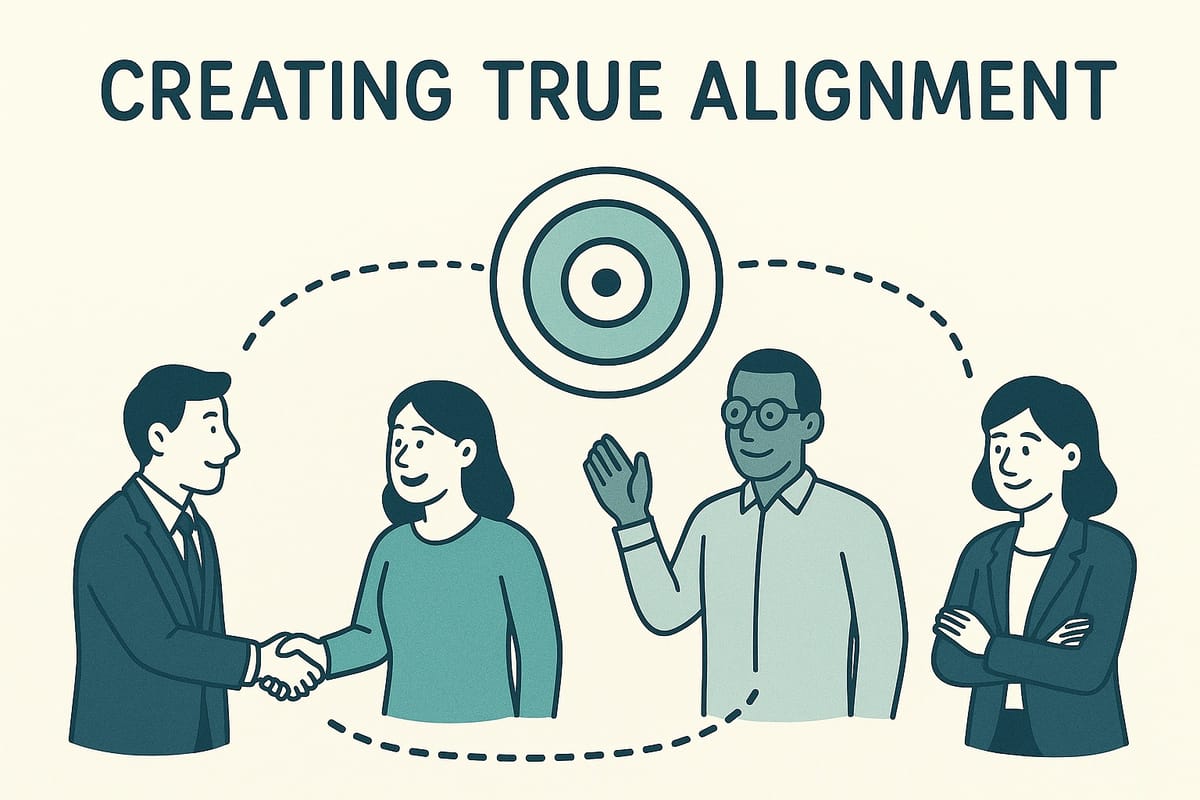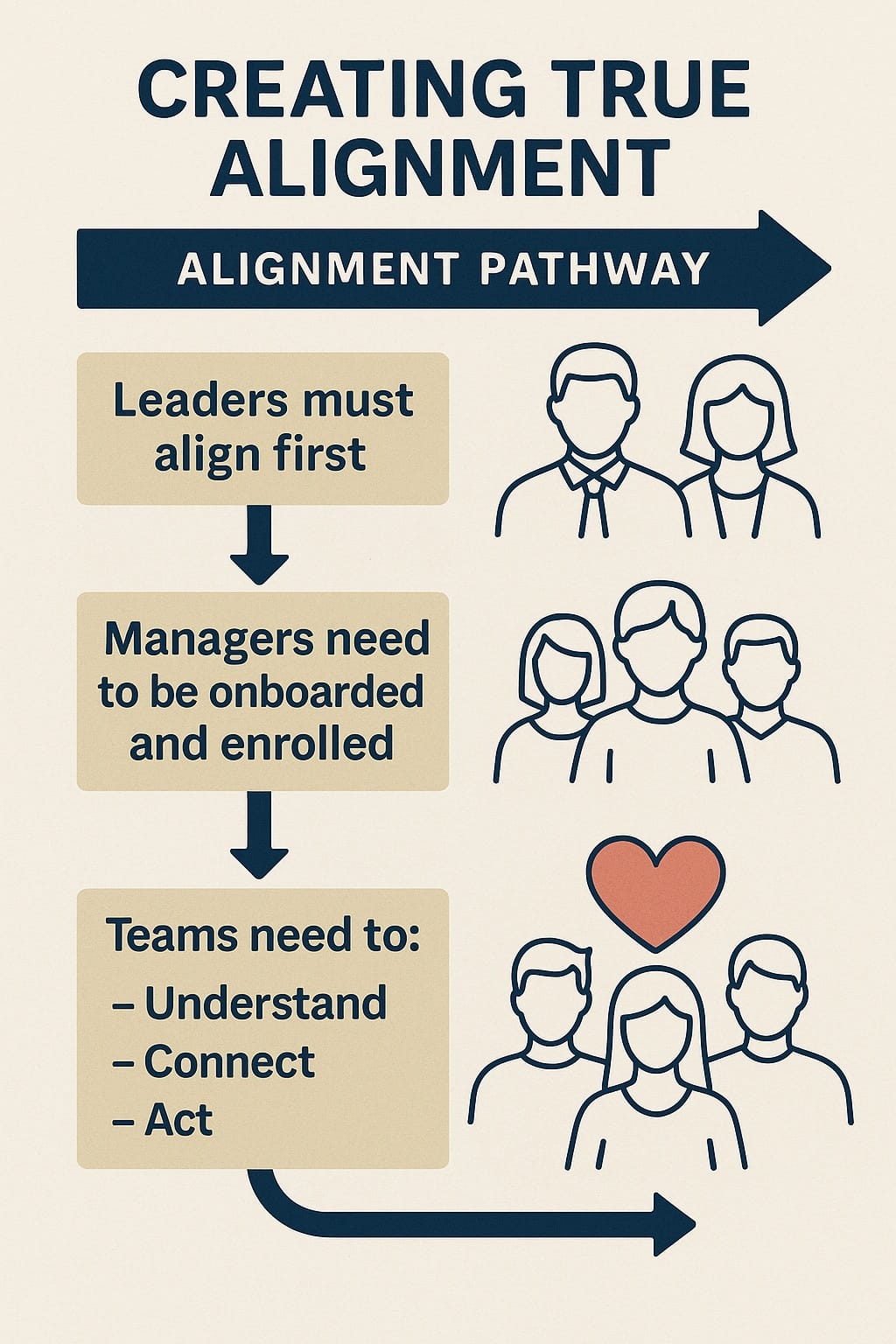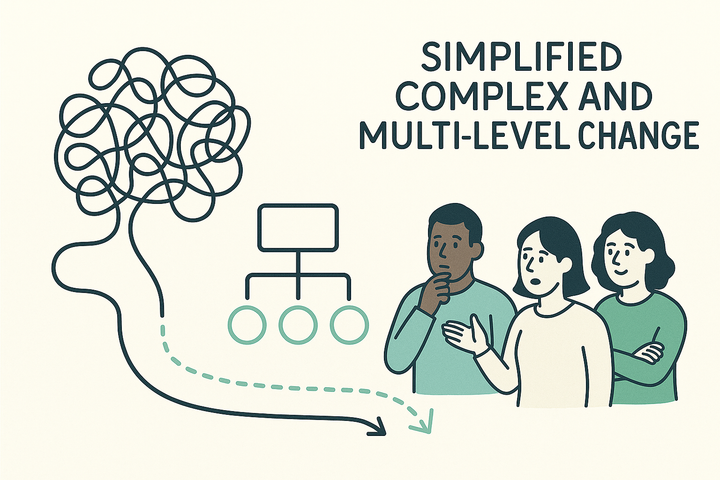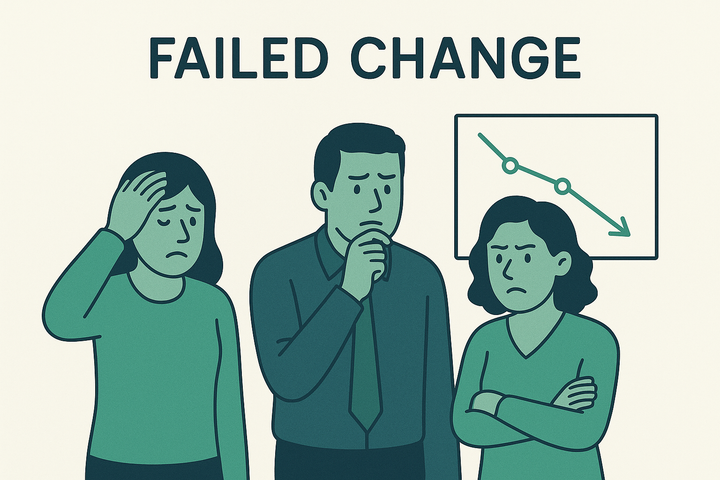Creating True Alignment For Organisational Change
Alignment is the connective tissue of change. This article walks through how to build a real alignment pathway—starting with leaders, enrolling managers, and preparing teams for behavioural action.

It’s one thing to announce a direction. It’s another to get people moving in the same direction, with clarity, conviction, and enough cohesion to navigate uncertainty.
In practice, most organisations overestimate how aligned they are. The slide deck gets approved. The “core narrative” is signed off. The comms plan is greenlit. And yet…
• Leaders say different things in different rooms.
• Managers feel left out of the loop.
• Teams are unsure what’s real, what’s urgent, and what’s still up for debate.
That’s not alignment. That’s entropy.
What Alignment Really Means
Alignment isn’t about getting everyone to say the same thing. It’s about creating coherence—across decisions, behaviours, messages, and experience.
When alignment is strong, people know:
- What we’re doing and why
- How we’re doing it and what’s expected of them
- What’s changing, what’s staying the same, and what matters most right now
It’s not just strategic. It’s operational, cultural, and emotional. Alignment builds confidence. Misalignment breeds friction.
The Alignment Pathway
Alignment has to be built deliberately, and it has to move in the right order. We call this the alignment pathway, and it flows like this:
1. Leaders must align first
If your leadership team isn’t aligned on story, decisions, tone, and behaviour, don’t communicate yet. People will feel the gaps instantly. And nothing erodes trust faster than contradictory messages from the top.
True leadership alignment means:
- Agreement on what’s being communicated, and why
- Commitment to consistent framing and language
- Clarity on what’s known, unknown, and non-negotiable
- Readiness to model the change, not just endorse it
2. Managers need to be onboarded and enrolled
Managers are your front line in change. If they feel blindsided, sceptical, or unsupported, the whole initiative stumbles.
Enrol them early. Give them space to process, question, and challenge. Equip them with the tools and context they need to support their teams, not just deliver a script. Because teams don’t just listen to what managers say. They watch how they show up.

3. Teams need to understand, connect, and act
Once the message reaches staff, it needs to do three things:
- Help them understand what’s happening
- Allow them to emotionally connect to the “why”
- Support them to act differently in their day-to-day work
This is where alignment becomes visible—not in the messaging, but in the behaviour. What people prioritise. What they say yes or no to. What they challenge, protect, let go of, or lean into.
If the organisation has been truly aligned, you’ll feel it in how people act. Not just what they say.
Building the Pathway Takes Work
Alignment doesn’t happen in one email or one town hall. It takes sequencing. It takes structure. It takes listening and adaptation. And it takes discipline across every layer of the system.
If you skip straight to the broadcast stage, you’ll end up doing rework later, trying to rebuild trust, re-explain decisions,and re-energise disengaged teams.
The alignment pathway helps you get it right the first time.
You might also want to read:
- How to Communicate Change
- The Sensemaking–Alignment–Activation Model
- Sensemaking in Change Communication
- Creating True Alignment for Organisational Change
- Activating Behaviour During Change
Is Your Leadership Team Really Aligned?
Most aren’t—and that’s why the message doesn’t land. The Sound & Signal Review gives you a no-fluff view of what’s really going on behind the scenes, and what needs to be done before you communicate anything else.
Or, if you need to get leaders in a room and sort alignment fast, the Rapid Action Accelerator is built for exactly that.



